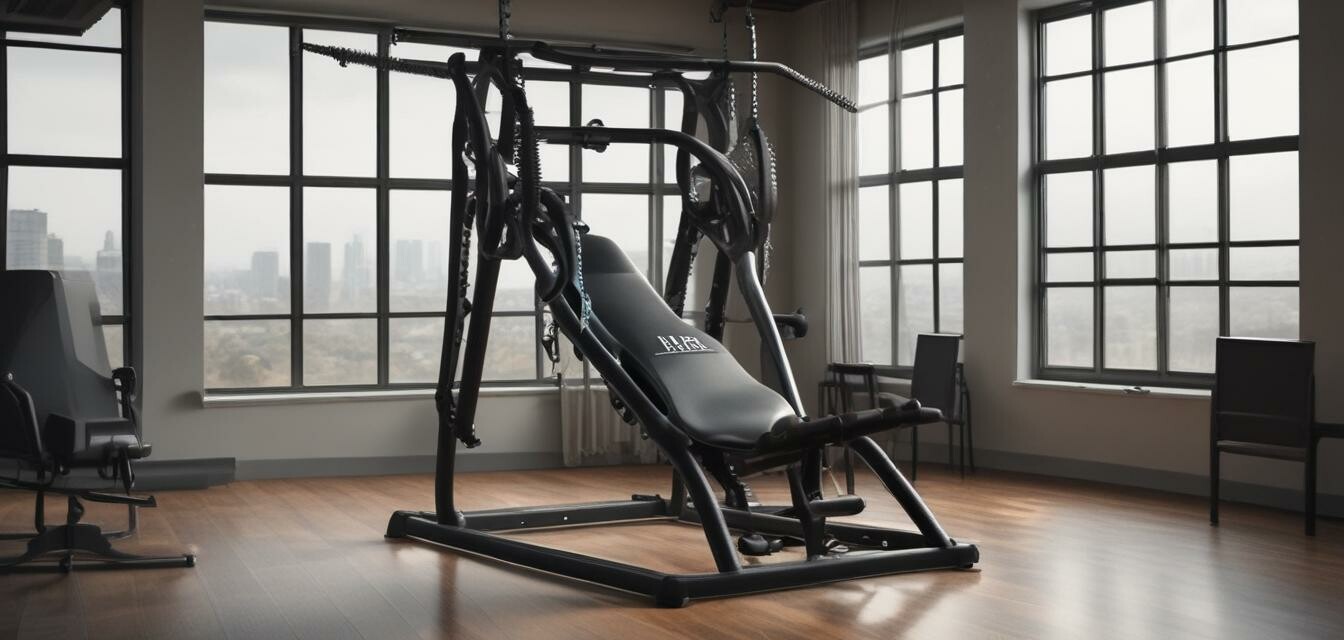
Ultimate guide to choosing your inversion table
Key Takeaways
- Consider the weight capacity to ensure safety and durability.
- Look for adjustable features for comfort and effectiveness.
- Assess the space requirements to fit the table in your home.
- Prioritize safety features, including locking mechanisms and padded ankle supports.
- Keep in mind the assembly process and maintenance of the inversion table.
When it comes to purchasing an inversion table, making an informed decision can greatly enhance your overall experience. Inversion tables are a popular tool for back pain relief, enhancing flexibility, and promoting a more active lifestyle. However, not all tables are created equal. In this guide, we will explore essential factors to consider when selecting your inversion table, ensuring you find the best fit for your needs.
Factors to consider when choosing an inversion table
1. Weight capacity
The weight capacity of an inversion table is crucial for safety. Tables typically range from 200 lbs to over 600 lbs. Always choose a table that can comfortably accommodate your weight, providing additional support and stability.
2. Durability and build quality
Inversion tables are made from various materials, which can affect their durability. Look for tables made from heavy-duty steel frames, which tend to last longer.
3. Adjustable features
Look for inversion tables with adjustable height settings and inversion angles. These features allow users of different heights to use the table comfortably and also allow for a variety of inversion angles, which can enhance the benefits of using the table.
Table: Comparison of inversion table features
| Feature | Basic | Standard | Premium |
|---|---|---|---|
| Weight Capacity | Up to 200 lbs | Up to 400 lbs | Up to 600 lbs |
| Adjustable Height | No | Yes | Yes |
| Inversion Angles | 90 Degrees Only | Multiple Angles | Full Range with Locking Options |
| Comfort Features | Basic Padding | Thicker Padding | Extra Padding & Ergonomic Design |
4. Safety features
Safety should never be compromised. Look for features such as:
- Locking mechanisms to keep the table secure during use.
- Padded ankle supports to keep you safe and comfortable.
- Non-slip feet to prevent movement during use.
5. Space requirements
Before purchasing an inversion table, assess the space where you plan to use it. Most tables require a certain amount of room for both setup and usage. Consider a foldable model if space is limited.
6. Assembly and maintenance
Check the assembly requirements of different models. Some tables come pre-assembled, while others might take some time to put together. Additionally, ensure that the materials used are easy to clean and maintain for long-lasting use.
Inversion table types
There are several types of inversion tables available, including:
- Traditional Inversion Tables: Basic models for general use, focusing on ease of use and affordability.
- Heavy Duty Inversion Tables: Designed for heavier users or those requiring extra durability.
- Specialized Inversion Tables: These may include additional features for therapy or fitness training.
FAQs about inversion tables
1. How do I know if an inversion table is right for me?
Consider your health conditions, weight, and how you plan to use the table. Consult with a fitness professional if needed.
2. Can inversion tables be used daily?
Many users find daily use beneficial, but it’s important to start slowly and see how your body responds.
3. What is the average price of an inversion table?
Prices range from $100 to over $300, depending on the features and quality.
Conclusion
Choosing the right inversion table can greatly enhance your experience and effectiveness in achieving your fitness goals. By considering weight capacity, stability, safety features, and your own personal needs, you can make an informed choice. For more information on fitness equipment, feel free to check out our comprehensive guides on buying guides and explore our other categories such as back stretching devices and core training equipment.
Tips for beginners
- Start with short sessions (1-2 minutes) to get used to the inversion.
- Always ensure safety features are locked before use.
- Gradually increase the angle of inversion as you become more comfortable.
Pros
- Helps enhance flexibility.
- May improve overall posture.
- Offers varied inversion angles for different users.
Cons
- Some models can be bulky.
- Requires space for setup and use.
- Not suitable for everyone; consult a professional if unsure.